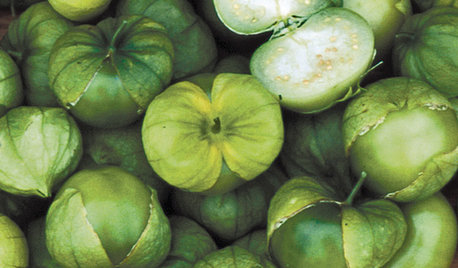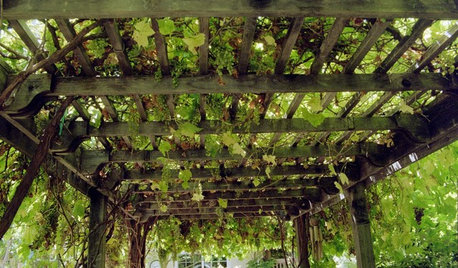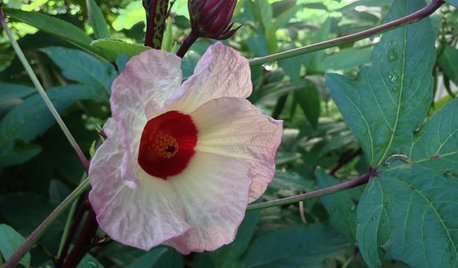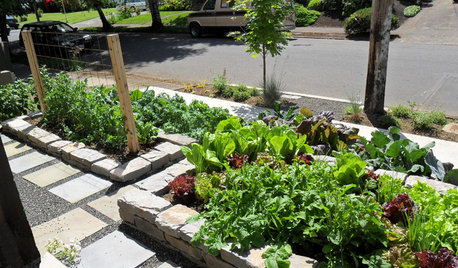Remedy for tomato blight
ellenr22 - NJ - Zone 6b/7a
14 years ago
Related Stories

EDIBLE GARDENSSummer Crops: How to Grow Tomatoes
Plant tomato seedlings in spring for one of the best tastes of summer, fresh from your backyard
Full Story
HEALTHY HOMESleep Happier and Healthier in a Toxin-Free Bedroom
Light pollution, toxic bedding, wallpaper that off-gases ... if you're not getting good sleep, these bedroom blights might be to blame
Full Story
SUMMER FRUITS AND VEGETABLESSummer Crops: How to Grow Tomatillos
Grow this Mexican native for the freshest salsa verde — and for fewer problems than its tomato cousins
Full Story0

SPRING GARDENINGSummer Crops: How to Grow Strawberries
Pluck your own sweet strawberries right from the garden vine for smoothies, salads or eating then and there
Full Story
GARDENING AND LANDSCAPINGVertical Gardens Raise the Limits for Landscapes
Turn a small garden space into a towering success with an upward-bound collection of edible delights
Full Story
EDIBLE GARDENSGreat Design Plant: Roselle Tantalizes With Beauty and Flavor
Call it a fruit or a flower or a sweet vegetable. This hibiscus is so lovely, all that matters is calling it forth in your garden
Full Story
FARM YOUR YARDHow to Grow Vegetables in Containers
Get glorious vegetables and fruits on your patio with a pro’s guidance — including his personal recipe for potting mix
Full Story
FARM YOUR YARDIf You Have Room for Only One Summer Crop ...
Get an edible that’s long on flavor even if you’re short on space, with a long-time gardener’s favorite picks
Full Story
HOUSEKEEPINGOut, Darn Spot! Tips for Removing Carpet Stains
Know the right solutions and when to use them to prevent stains from pets, soda, chocolate, blood and more
Full Story
FRONT YARD IDEASWelcome Edibles Into the Front Yard for Fresh Food and More
Give your front yard design a boost and maybe even make new friends by growing fruits and vegetables
Full Story






anney
ellenr22 - NJ - Zone 6b/7aOriginal Author
Related Professionals
70037 Landscape Architects & Landscape Designers · Billerica Landscape Contractors · Tempe Landscape Contractors · Lemont Landscape Contractors · Lexington Landscape Contractors · Lyndhurst Landscape Contractors · Roseville Landscape Contractors · Setauket-East Setauket Landscape Contractors · Soddy Daisy Landscape Contractors · North Aurora Landscape Contractors · Casselberry Landscape Contractors · Coronado Decks, Patios & Outdoor Enclosures · Brentwood Decks, Patios & Outdoor Enclosures · Lincolnton Decks, Patios & Outdoor Enclosures · Miami Decks, Patios & Outdoor Enclosuresellenr22 - NJ - Zone 6b/7aOriginal Author
Kimmsr
anney
nandina
anney
graficaamy
erik_s
justaguy2
justaguy2
Dan _Staley (5b Sunset 2B AHS 7)
goyettemc_mac_com
anney
organicguy
rae_stl
Kimmsr
Michael
pam2009
donjrl_bellsouth_net
flora_uk
njgardener47
joel_bc
joel_bc
DesigningDeb
butchfomby
Michael
nc_crn
buttercupia
little_minnie
buttercupia
theforgottenone1013 (SE MI zone 5b/6a)
Nathan Fisher
marvey
gardengal48 (PNW Z8/9)
Nathan Fisher